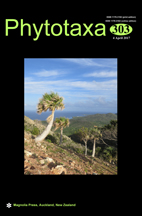Abstract
Antrodia uzbekistanica sp. nov. is described and illustrated from juniper trees in Uzbekistan based on morphological characters and molecular evidence. It is characterized by producing annual, resupinate basidiome with large pores (1–2 per mm), a dimitic hyphal structure with clamp connections on generative hyphae, hyaline, thin-walled and cylindric basidiospores (6.5–8 × 2.7–3 µm), the presence of thick-walled and cyanophilous chlamydospores, and by causing a typical brown rot of Juniperus seravschanica in arid and semi-arid regions of Uzbekistan. The new species resembles Antrodia sinuosa macroscopically, but this species differs by having smaller basidiospores (4–6 × 1–2 µm), lacking of chlamydospores, and growing on wood of Pinaceae species. In nuclear large subunit rDNA (nLSU) and internal transcribed spacer (ITS) based phylogenies, the new species formed a distinct lineage in the Antrodia clade, and it is closely related to A. juniperina, which differs by having perennial, effused-reflexed basidiome with nodulose or round edged pilei, daedaleoid to labyrinthine pores, and larger and narrowly ellipsoid basidiospores (6.5–9 × 2.5–3.5 µm).

